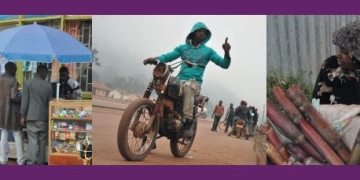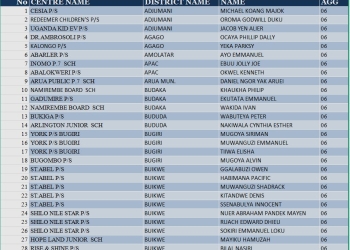KAMPALA —The East Africa Crude Oil Pipeline project (EACOP), which is meeting resistance from opponents of Uganda’s development, is one of the projects Uganda has planned to monetize its oil and gas assets, which are currently valued at US$ 116 billion (gross). These assets are certainly among the country’s biggest economic assets in terms of value.
Some of the strategic reasons for choosing to export about 57% of the crude oil to be produced in the country are to access the international market, enhance the country’s export base and the trade balance which is currently in deficit.
Feasibility studies
In line with the MoU on commercialisation of the discovered petroleum resources in Uganda, feasibility studies on the development of a Crude Oil Export Pipeline from the Albertine Graben in Uganda to the East African Coast were undertaken with a view to selecting the least cost route for transporting Uganda’s crude oil to the coast. The Hoima (Uganda) – Tanga (Tanzania) route was selected as more secure, at a cheaper cost and therefore, a lower tariff.
The EACOP is a 1,443km, 24-inch diameter heated and buried crude oil pipeline that will start from Kabaale, Hoima in Uganda to Chongoleani, Tanga in Tanzania. The pipeline will have a manifold in Kabaale, Hoima, six (06) pumping stations (two (02) of which will be located in Uganda), 27 heating stations and two (02) pressure reduction stations.

The development of this pipeline is being led by the licensed upstream oil companies in Uganda, with participating interests by the Governments of Uganda and Tanzania.
Project development committees have been set up including a Pipeline Project Team (PPT) led by the private sector in carrying out daily activities of the Project. This is in addition to a multidisciplinary Joint Project Development Committee (JPDC) spearheading the implementation of the project, and a Project Steering Committee (PSC) of Permanent Secretaries to review progress and report to the sector Ministers.
Legal Framework
The Inter-Governmental Agreement between Uganda and Tanzania was signed during May 2017 and Foundation Stones for the EACOP were laid both in Tanga and Hoima during August 2017 and November 2017 respectively.
Negotiations of the Uganda Host Government Agreement (HGA) for EACOP between the PPT and the GoU commenced in February 2018 and were concluded in September 2020. Subsequently, negotiations for the Shareholders Agreement (SHA) and the Transportation and Tariff Agreement (TTA) were also finalised. This culminated into the signing of the Uganda HGA, SHA and TTA on 11th April 2021, hence the launch of Uganda’s oil and gas projects.
The PAU has held several meetings with the Energy, Water and Utilities Regulatory Authority (EWURA), which is mandated to regulate the midstream and downstream activities in Tanzania, to discuss the modalities of cooperation in the regulation of the EACOP –a cross-border pipeline. The meetings discussed the regulatory requirements in their various laws, and those that would require harmonization between the two States in the ongoing HGA negotiations. These discussions have culminated into a draft Memorandum of Understanding (MoU) between the PAU and EWURA to guide future partnership. This MoU is expected to be signed before the end of 2019.
FEED and Technical Surveys
Gulf Interstate Engineering (GIE), a company based in Houston Texas, USA, was contracted by Total, the lead sponsor for the EACOP, to carry out the FEED study. The FEED was officially launched in January 2017 and completed in February 2018. The PAU reviewed the FEED, and several engagements with the Pipeline Project Team (PPT) have been held to facilitate approval of the FEED.
The Engineering, Procurement and Construction Management (EPCM) contract was awarded to WorleyParsons (now Worley Limited) UK, working with Newplan Engineers and Infra Consulting Services from Uganda, together with Norplan Tanzania and Inter Consult Ltd from Tanzania. The Conditional letter of award to WorleyParsons included early EPCM activities comprising of: FEED validation, carrying out value engineering of the design, procurement of some of the long lead items, and other activities. These early EPCM activities commenced in August 2018 and are still ongoing at the contractor’s office in London. The overall progress is at 85%. The full EPCM contract will be signed after the FID is taken.
CGG Services (Veritas) S.A.S from France conducted geological and geophysical surveys along the EACOP route for the Uganda section. The technical surveys were undertaken in phases starting with the geological, followed by a geophysical survey. Geological and Geophysical surveys were completed in July 2018 and December 2018 respectively, while excluding the areas in Kyotera that were suspected to have Unexploded Ordnance (UXO).
The geotechnical surveys for the Uganda section was undertaken by Geomechanics from South Africa. The results from the geotechnical surveys will be correlated with results from geophysical and geological surveys to delineate areas with different soil types.
Land Acquisition and Environment Studies
 The Land requirements for the EACOP in Uganda is comprised of construction camps covering 172 acres; pipeline Right of Way (RoW) and orphan land covering 2,745 acres; and feeder roads covering 182 acres. The PAU is working with the district local Governments and the Ministry of Lands Housing and Urban Development (MLHUD) and the project developers to review the draft valuation reports, in order to facilitate the acquisition of land.
The Land requirements for the EACOP in Uganda is comprised of construction camps covering 172 acres; pipeline Right of Way (RoW) and orphan land covering 2,745 acres; and feeder roads covering 182 acres. The PAU is working with the district local Governments and the Ministry of Lands Housing and Urban Development (MLHUD) and the project developers to review the draft valuation reports, in order to facilitate the acquisition of land.
The EACOP Environmental and Social Impact Assessment (ESIA) report was submitted to NEMA by the project sponsors during January 2019. The PAU organised three (03) Public Hearings that were held in Rakai, Kakumiro and Mubende districts and ten (10) public dialogues across the EACOP route during November 2019. The ESIA report was updated and resubmitted to NEMA, and the ESIA certificate issued during December 2020.

















